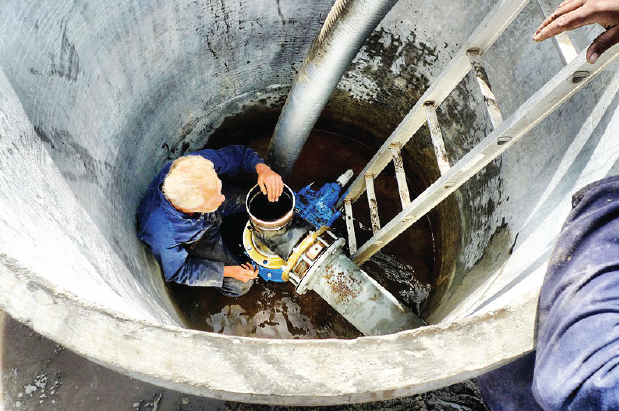R11 million upgrade for Trompsburg plant

The Free State provincial government is working with the Xhariep District Municipality to revamp the waste water treatment plant serving the town of Trompsburg in order to increase its capacity and accommodate the newly built Trompsburg Hospital.
Free State provincial spokesperson Mondli Mvambi said the project to refurbish the treatment plant and increase sewerage pipe capacity, which is expected to cost R11 million, was necessary to accommodate a growing load chiefly because of the new hospital.
“Their main pipeline was 150 mm in diameter whereas that linking Albert Nzula Hospital is 200mm in diameter,” said Mvambi.
“The two spheres of government are now in the process of aligning their pipes to be 200mm as a mechanism to avoid future sewerage (over) loads that would lead to pipe bursts,” Mondli explained.
The new hospital that is expected to be officially opened soon boasts an administration block, male and female wards with 74 beds, a maternity section, paediatric ward, emergency medical services, rehabilitation and an occupational therapy section.
The hospital also has state of the art outpatient and x-ray departments, as well as a pharmacy, mortuary, kitchen, central sterilising unit, theatres and staff housing. The environment friendly health centre has an energy saving system for power.
The Free State provincial government declared Trompsburg as the administrative head office of the Xhariep District. This allows the town to be prioritised when new development projects come up.
“Whilst the upgrades to the municipal infrastructure are being effected, the provincial government working with the local municipality is implementing interim measures to prepare for the official opening of the hospital,” added Mvambi.
He said other infrastructure projects were expected to be rolled out in order to cater for future development in the town and the surrounding areas.
According to the provincial spokesperson, this would be part of the integrated planning and implementation of infrastructure projects between the national, provincial and local spheres of government.
By July 2013 when the hospital was under construction, it created 29 permanent work opportunities and 6 679 temporary job opportunities. The 6 679 temporary employees consists 2 039 adult men, 142 adult women, 3 696 young men as well as 802 young women.
Most of the workers were locals who acquired skills that would ultimately improve their chances of getting employed or even start their own businesses.
